I created RESTful webservice (WCF) where I check credentials on each request. One of my clients is Android app and everything seems to be great on server side. I get request and if it's got proper header - I process it, etc..
Now I created client app that uses this service. This is how I do GET:
// Create the web request
var request = WebRequest.Create(Context.ServiceURL + uri) as HttpWebRequest;
if (request != null)
{
request.ContentType = "application/json";
// Add authentication to request
request.Credentials = new NetworkCredential(Context.UserName, Context.Password);
// Get response
using (var response = request.GetResponse() as HttpWebResponse)
{
// Get the response stream
if (response != null)
{
var reader = new StreamReader(response.GetResponseStream());
// Console application output
var s = reader.ReadToEnd();
var serializer = new JavaScriptSerializer();
var returnValue = (T)serializer.Deserialize(s, typeof(T));
return returnValue;
}
}
}
So, this code get's my resource and deserializes it. As you see - I'm passing credentials in my call.
Then when debugging on server-side I noticed that I get 2 requests every time - one without authentication header and then server sends back response and second request comes bach with credentials. I think it's bad for my server - I'd rather don't make any roundtrips. How should I change client so it doesn't happen? See screenshot of Fiddler


EDIT:
This is JAVA code I use from Android - it doesn't do double-call:
MyHttpResponse response = new MyHttpResponse();
HttpClient client = mMyApplication.getHttpClient();
try
{
HttpGet request = new HttpGet(serviceURL + url);
request.setHeader(new BasicHeader(HTTP.CONTENT_TYPE, "application/json"));
request.addHeader("Authorization", "Basic " + Preferences.getAuthorizationTicket(mContext));
ResponseHandler<String> handler = new BasicResponseHandler();
response.Body = client.execute(request, handler);
response.Code = HttpURLConnection.HTTP_OK;
response.Message = "OK";
}
catch (HttpResponseException e)
{
response.Code = e.getStatusCode();
response.Message = e.getMessage();
LogData.InsertError(mContext, e);
}